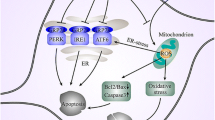Abstract
PARKINSON 's disease results from the progressive degeneration of dopamine neurons that innervate the striatum1,2. In rodents, glial-cell-line-derived neurotrophic factor (GDNF) stimulates an increase in midbrain dopamine levels, protects dopamine neurons from some neurotoxins, and maintains injured dopamine neurons3–9. Here we extend the rodent studies to an animal closer to the human in brain organization and function, by evaluating the effects of GDNF injected intracerebrally into rhesus monkeys that have had the symptomatology and pathophysiological features of Parkinson's disease induced by the neurotoxin 1-methyl-4-phenyl-l,2,3,6-tetrahydropyridine (MPTP)10–14. The recipients of GDNF displayed significant improvements in three of the cardinal symptoms of parkinsonism: bradykinesia, rigidity and postural instability. GDNF administered every four weeks maintained functional recovery. On the lesioned side of GDNF-treated animals, dopamine levels in the midbrain and globus pallidus were twice s high, and nigral dopamine neurons were, on average, 20% larger, with an increased fibre density. The results indicate that GDNF may be of benefit in the treatment of Parkinson's disease.
Similar content being viewed by others
References
Jellinger, K. Adv. Neurol. 45, 1–18 (1986).
Hornykiewicz, O. & Kish, S. J. Adv. Neurol. 45, 19–34 (1986).
Lin, L.-F. H., Doherty, D. H., Lile, J. D., Bektesh, S. & Collins, F. Science 260, 1130–1132 (1993).
Beck, K. D. et al. Nature 373, 339–341 (1995).
Bowenkamp, K. E. et al. J. comp. Neurol. 355, 479–489 (1995).
Hoffer, B. J. et al. Neurosci. Lett. 182, 107–111 (1994).
Hudson, J. et al. Brain Res. Bull. 36, 425–432 (1995).
Tomac, A. et al. Nature 373, 335–339 (1995).
Kearns, C. M. & Gash, D. M. Brain Res. 672, 104–111 (1995).
Ovadia, A., Zhang, Z. & Gash, D. M. Neurobiol. Aging 16, 931–937 (1995).
Gash, D. M. et al. J. comp. Neurol. 363, 345–358 (1995).
Bankiewicz, K. S. et al. Life Sci. 39, 7–16 (1986).
Bankiewicz, K. S., Mandel, R. J. & Sofroniew, M. V. Expl Neurol. 124, 140–149 (1993).
Smith, R. D., Zhang, Z., Kurlan, R., McDermott, M. & Gash, D. M. Neuroscience 52, 7–16 (1993).
DeLong, M. R. Trends Neurosci. 13, 281–289 (1990).
Robertson, G. S. & Robertson, H. A. Neurosci. Lett. 89, 204–208 (1988).
Robertson, G. S. & Robertson, H. A. J. Neurosci. 9, 3326–3331 (1989).
Dougle, K. L. & Crocker, A. D. Proc. natn. Acad. Sci. U.S.A. 92, 1669–1673 (1995).
Greenamyre, J. T. et al. Ann. Neurol. 35, 655–661 (1994).
Coggeshall, R. E. Trends Neurosci. 15, 9–13 (1992).
West, M. J. Neurobiol. Aging 14, 275–285 (1993).
Harding, A. J., Halliday, G. M. & Cullen, K. J. Neurosci. Meth. 51, 83–89 (1994).
Author information
Authors and Affiliations
Rights and permissions
About this article
Cite this article
Gash, D., Zhang, Z., Ovadia, A. et al. Functional recovery in parkinsonian monkeys treated with GDNF. Nature 380, 252–255 (1996). https://doi.org/10.1038/380252a0
Received:
Accepted:
Issue Date:
DOI: https://doi.org/10.1038/380252a0
- Springer Nature Limited
This article is cited by
-
Modulation of nigral dopamine signaling mitigates parkinsonian signs of aging: evidence from intervention with calorie restriction or inhibition of dopamine uptake
GeroScience (2023)
-
Elevated endogenous GDNF induces altered dopamine signalling in mice and correlates with clinical severity in schizophrenia
Molecular Psychiatry (2022)
-
Novel targeted therapies for Parkinson’s disease
Molecular Medicine (2021)
-
Glial cell line-derived neurotrophic factors (GFLs) and small molecules targeting RET receptor for the treatment of pain and Parkinson’s disease
Cell and Tissue Research (2020)
-
Neurotrophic factors for disease-modifying treatments of Parkinson's disease: gaps between basic science and clinical studies
Pharmacological Reports (2020)





